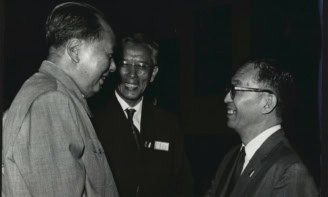Creative moments in art and science are closer than we might think, says Robert P Crease

In his book Franklin and Newton, science historian I Bernard Cohen cites a remark attributed to Einstein that “even had Newton or Leibnitz never lived, the world would have had the calculus, but that if Beethoven had not lived, we would never have had the C-Minor Symphony”.
The Newton-Beethoven comparison – which I have heard expressed in different ways using different scientists and artists – is one of the most dramatic ways of posing the question of the relation between the sciences and the arts. The usual argument contrasts the two, on the basis of the assumption that while the products of science are inevitable those of the arts are not.
In theory…
Many attempts have been made to account for this inevitability. The philosopher Immanuel Kant’s answer involves the role of what he calls “genius”. According to Kant, genius exists in the arts but not in the sciences – despite the common romanticization of scientists like Newton. While scientists can teach others their work, artists produce original works, the secret of the creation of which is unknown.
“Newton could show how he took every one of the steps he had to take to get from the first elements of geometry to his great and profound discoveries,” Kant wrote, “not only to himself but to everyone else as well, in an intuitive[ly clear] way, allowing others to follow.” This is not the case with Homer and other great poets. “One cannot learn to write inspired poetry,” continued Kant, “however elaborate all the precepts of this art may be, and however superb its models.” He believed that works of genius can, however, become examples for minds of lesser originality, which is what gives us schools and traditions in the arts and humanities.
The astronomer and historian Owen Gingerich has made an interesting case in favour of an analogy rather than a contrast. The Newtonian world system is not inevitable, he argues, because alternative explanations for celestial phenomena (in the form of Kepler’s laws) can be derived from other sources such as conservation laws. Gingerich’s demonstration of an alternative highlights the role of imagination and creativity in Newton’s achievement, and in doing so also highlights the singular nature of his work. “Newton’s Principia is a personal achievement that places him in the same creative class as Beethoven or Shakespeare,” Gingerich concludes.
But Gingerich cautions against drawing the Newton-Beethoven analogy too closely. “The synthesis of knowledge achieved in a major scientific theory is not fully the same as the ordering of the components in an artistic composition,” he says. A scientific theory is constrained by nature, and is subject to “experimentation, extension, falsification”. Scientific achievements can be legitimately and even inevitably paraphrased (who but historians reads the Principia any more?) in ways that artistic works cannot. And the way that science progresses is very different from the arts.
Nevertheless, Gingerich concludes, careful analysis of the Newton-Beethoven comparison – of the analogy and the contrast – allows us “to gain a more sensitive view of the nature of scientific creativity”.
…and in experiment
The Newton-Beethoven comparison takes on another dimension if the issue is not theory building but devising and carrying out experiments. Experimentation is often viewed by outsiders as an automatic process involving minimal creative input. In this picture, experimentation resembles the game show “Concentration”, which ran on American television between 1958 and 1973. Contestants had to discover and interpret what lay behind the hidden faces of a set of blocks mounted in a wall. As the game proceeded, the blocks were rotated one at a time to reveal portions of a picture represented by words and symbols, which the contestants vied to decipher. The blocks were rotated by off-stage technicians – the “experimenters” – who activated hidden machinery. The mechanical process was of no real interest to the contestants, who only paid attention to the data on the surface.
The “Concentration” view of experimentation is, of course, inaccurate. Nothing is automatic or inevitable about a well designed experiment, and devising one can involve what Kant calls genius, for which no rule exists beforehand. When staged ingeniously enough, elements that we can understand and control – for example the speeds of balls rolling down a ramp, the shape of beams of light passing through an array of prisms or the procession of a pendulum’s plane of oscillation – can reveal something new about the world of which they are a part. Form emerges out of chaos.
The critical point
Kant is surely right that style and tradition work differently in the sciences and the arts. An experiment is not recognizably a “Newton” or “à la Newton” in the same way that a painting may be recognizably a “Caravaggio” or “à la Caravaggio”. However, experimental work involves a different kind of ingenuity. Although also dependent on imagination and creativity, such ingenuity is not inevitable and creates its own kind of tradition of exemplars because it opens up new domains of research. An experiment is detachable from any specific performance, can be re-performed in myriad other ways with different technologies and degrees of precision, and is therefore a permanent contribution to culture.
The scientific imagination, like the artistic imagination, is a rigorous and disciplined one. It works within a set of existing resources, theories, products, budget and personnel. It fashions these elements into a performance that allows something new to appear, the design of which was not necessarily inevitable. Of course, a larger budget and improved materials would be better. But the experimental imagination looks on the pool of existing resources not as limiting but enabling, and makes its product work with what is available in the here and now. In this respect, the Newton-Beethoven analogy is more comparison than contrast.



